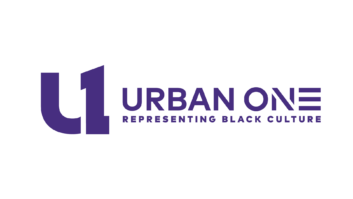Although many commercial and larger non-commercial radio Webcasters cringe when they think of having to meet the new SoundExchange requirement of reporting how many people heard each song over the Internet, smart broadcasters should look deeper into what this type of reporting technology can do to enhance the revenue of their radio stations. The possibilities are many.
If a given reporting technology can tell you how many people hear each song as it is played over the Internet, it also should be able to tell you how many people heard each radio advertisement aired as well. Real listener statistics can give your advertising sales presentation punch and authority.
Not only can you tell advertisers how many heard each ad online, but listener demographics also can be gleaned from the same data with a little extra effort. This may lead to targeted advertising programs designed to reach only a certain demographic.
The Internet is a powerful tool for broadcasters. The authoritative listener data missing from over-the-air broadcasting is abundant when using the Internet. Except for the largest online broadcasters, a void in online statistics has been forcefully filled by the mandated Copyright Royalty Board’s “Per Performance” reporting requirement.
Once a radio station’s automation system data is integrated with the streaming media server data, wondrous new possibilities will find their way into the sales portfolio of general managers and network executives.
The key to success for small and large radio operations alike is obtaining the required reporting services at the least expensive cost, and then ramping up advertising data programs on a scalable basis depending on audience size. In short, do what you must first, and then scale in the use of advertising data to support your online marketing efforts.
We read how big and important Internet radio is and will be in the future. Making Internet radio something more than a line item operating expense should be your ultimate goal. You’ll not invest time and money into building an Internet audience until you learn how to use this magnificent medium to generate additional revenue. You’ll not be able to measure your success online until you have relevant data from and about your online audience.
No radio station initially wants the new “Per Performance” reporting standard. If your station is going to keep its online broadcast, compliance is not the issue. The real question to be answered by commercial radio stations is how you will make a profit from your online broadcast.
Non-commercial radio stations have to become creative in using their online broadcast to increase listener support and show program funding donors how they can benefit from online broadcasting. As a side note, non-commercial broadcasters can actually sell hard-hitting radio spots on their online broadcast. These same advertisements would be prohibited if broadcast over-the-air.
Turning lemons into lemonade
Radio broadcasters believe the Copyright Royalty Board decision was flawed and just plain wrong in terms of the performance royalty rate. Ultimately, this forced compliance to the new per performance reporting standard may prove to be the catalyst for change that leads to the ultimate survival of online simulcasting produced by broadcast radio.
Station owners and network executives must look beyond the basic function of compliance and see how this new technology can benefit radio stations. Online radio channel aggregators and hosting services that support good advertising and reporting capabilities can help bring advertising revenue to even the smallest broadcasters.
An example of a new advertising platform is TargetSpot, which allows broadcasters to monetize their streams by selling a portion or all online ad inventories via TargetSpot’s unique marketplace. TargetSpot connects broadcasters to advertisers and ad agencies seeking new ways to reach engaged audiences as well as smaller advertisers who take advantage of the self-service and targeting tools provided.
Radio stations can sell available local online inventory and then let TargetSpot fill the balance of the inventory with national and regional ads. Your local advertisers can even specify which Zip codes they want their ads to play within. TargetSpot is one way to make lemonade out the lemons handed out by the CRB.
Online radio has been forcibly kicked out of the nest and it must learn to fly or crash on the rocks below the cliff. The monetization of a station’s simulcast doesn’t have to be as painful as many have described it to be. There is a technology-driven way to deliver powerful advertising messages to your online audience and to make money in the process.
I have often heard the old saying, “Opportunity is born out of adversity.” Consequently, broadcast radio must embrace the new per performance reporting requirement, and seek to monetize its online broadcasting. Something very good can most definitively come from something perceived as very bad.










